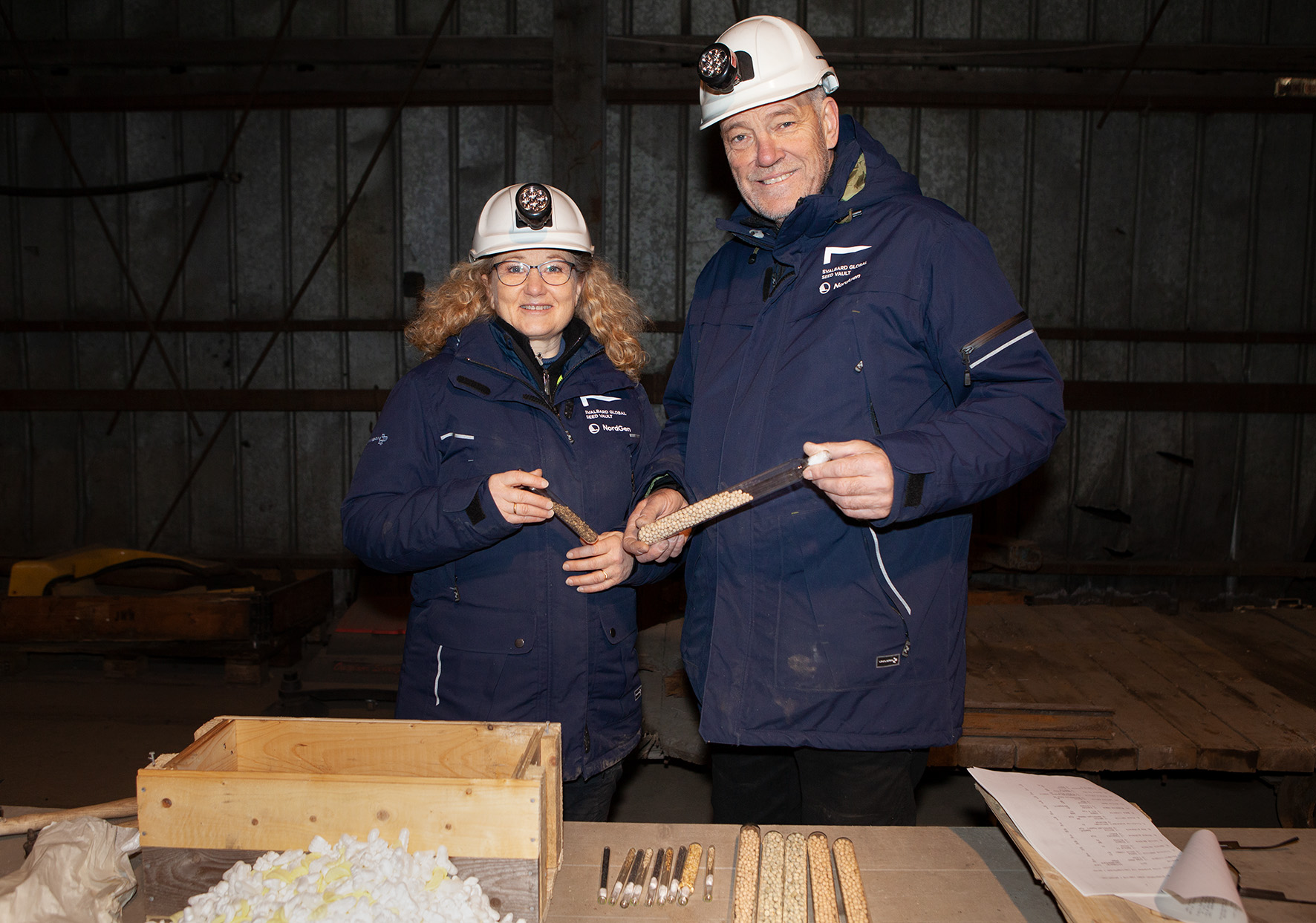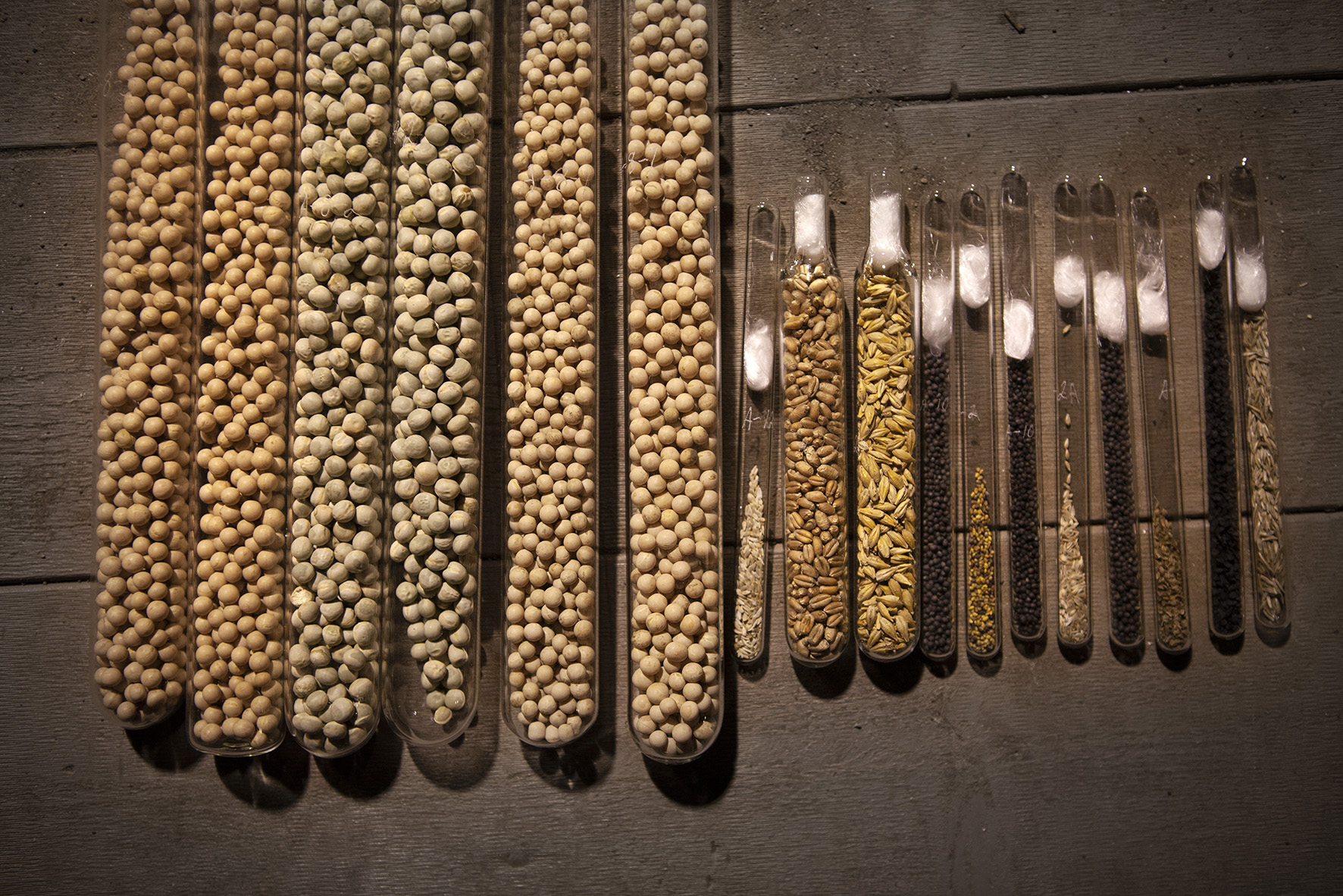
Discussion and Summary
When considering these results, it is important to stress that the project is characterized as a monitoring project with the aim to monitor changes in germination of the backup seed samples of the Nordic seed collection that were deposited in the coal mine at -3.7oC in 1984. The number of samples and replicates do not allow for broad statistical analysis and the scientific evidence and relevance is weak.
It is also important to note that the results are extracted from seeds conserved in permafrost just above 0oC and that the observations are not valid for conservation of seeds at -18oC, which is the temperature that is used for long term conservation of seeds by most genebanks and by the Svalbard Global Seed Vault.
a) The results show that 11 out of the 17 species after 35 years storage in permafrost have retained more than 90 percent of their initial germination percentage. The same figure five years ago was that 9 out of 17 species had results better than this threshold. On average, the observations then show that the germination percentages of these seeds more or less are the same as they were five years ago, with one major and three minor exceptions:
1) A major drop in germination of seeds of oil seed rape (Brassica napus) has been observed from 30 to 35 years of storage. This drop applies for both varieties of the species and oil seed rape is now, after 35 year storage ranged as having the poorest germination ability among the 17 crops in the project. Five years ago, seeds of oil seed rape germinated at a rate of 87%. Five years later this figure has dropped to 19%.
2) Three crops have entered the group of crops that has retained more than 90% of their initial germination ability, namely cauliflower (B. oleracea v. botrytis), barley (Hordeum vulgare) and the two varieties of peas (Pisum sativum). This mean that the germination results have slightly increased from 2016 to 2021, however again, no significant change, but an interesting observation though.
b) Regarding average results, there has been no major change in germination of seeds of the three cereal crops (barley, wheat and rye). However, as shown variety wise in figure 1, the cereal samples belonging to Series A that from 2021 have been analysed at NordGen, show an increased germination percentage compared to results from five years earlier (except for one of the two rye samples), while samples belonging to Series B that have been tested at Kimen seed lab shows a slight decrease in the germination percentage. The same protocol has been followed at both seed labs, and the observation is probably purely random, however, the observation should be paid further attention at the tests scheduled for 2026.
c) The crops Beta vulgaris, Allium cepa, Cucumis sativus, Poa pratensis, Trifolium pratense, Brassica oleracea ssp. capitata f. alba and Daucus carota still retain > 95% of the germination percentage analysed when the project was established in 1986.
d) The drop in germination of timothy and English ryegrass that started 10-15 years ago continues in the analysis carried out in 2021.
e) The 11 pathogens that are included in the project have survived over the 35 years, more or less at the same contamination levels as at the start of the project. The results are limited in number of replicates and too varying to draw any conclusions or to suggest more detailed trends or general knowledge from the pathogen survival analysis program.

NordGen's Executive Director, Lise Lykke Steffensen and Seed Vault Coordinator, Åsmund Asdal in Coal Mine 3, February 2022.
